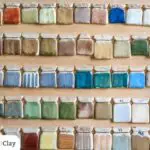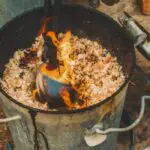Most people probably don’t think much about the clay they find when digging in the backyard. But if you’re ceramic nuts like us, then you know there’s SO much to know about this marvelous substance.
Clay is a natural material that can be molded when wet and becomes hardened when dried or fired.
And there are a few key things to know about clay when starting a pottery project. One of those things are the 7 stages of clay.
The 7 stages of clay are…
- Dry clay
- Slip
- Plastic clay
- Leather hard clay
- Bone dry clay
- Bisque
- Glazeware
In this article, we’ll take a closer look at each of those stages. Let’s do it 👇
1. Dry clay
This is clay minus water. You’ll find dry clay in powder form or in a rock-like form. Dry clay is a naturally occurring material.
Dry clay is easier to store. Water adds weight, can grow mold and stinks if untended. Dry clay doesn’t.
One of the things I want to park on for a second is the different types of clay. There are four main types:
- Earthenware
- Stoneware
- Porcelain
- Ball clay
And each has a different quality. Be sure to read our article “the four types of clay” to learn more.
2. Slip
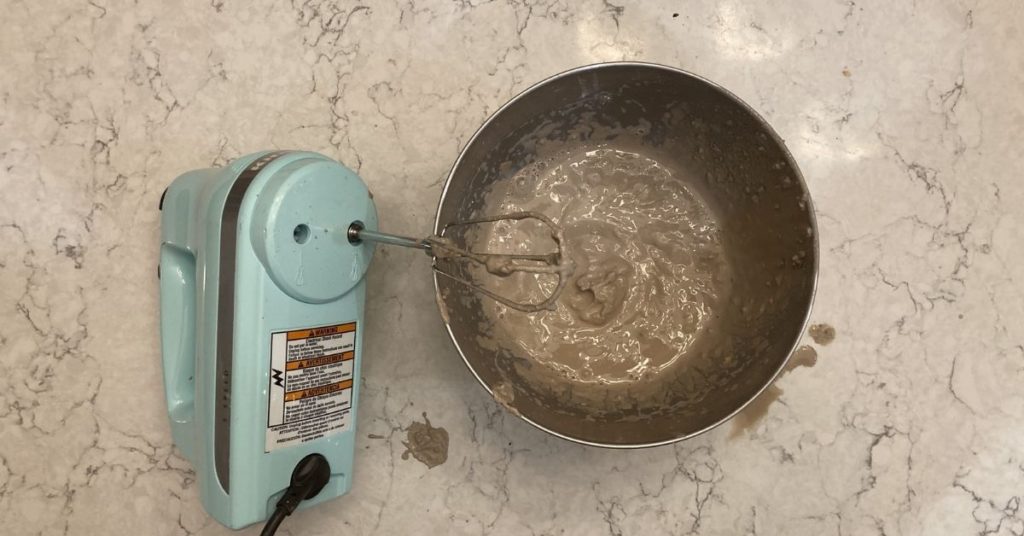
Slip in pottery is a liquid mixture of clay in water. You’ll sometimes hear slip referred to as clay slurry. It has a consistency like heavy cream though it can be runnier depending on what you’re using it for.
It’s used for three things: (1) decoration, (2) pouring moulds, and (3) adhering clay together.
Read our article “What is clay slip?” to get all the details.
3. Plastic clay
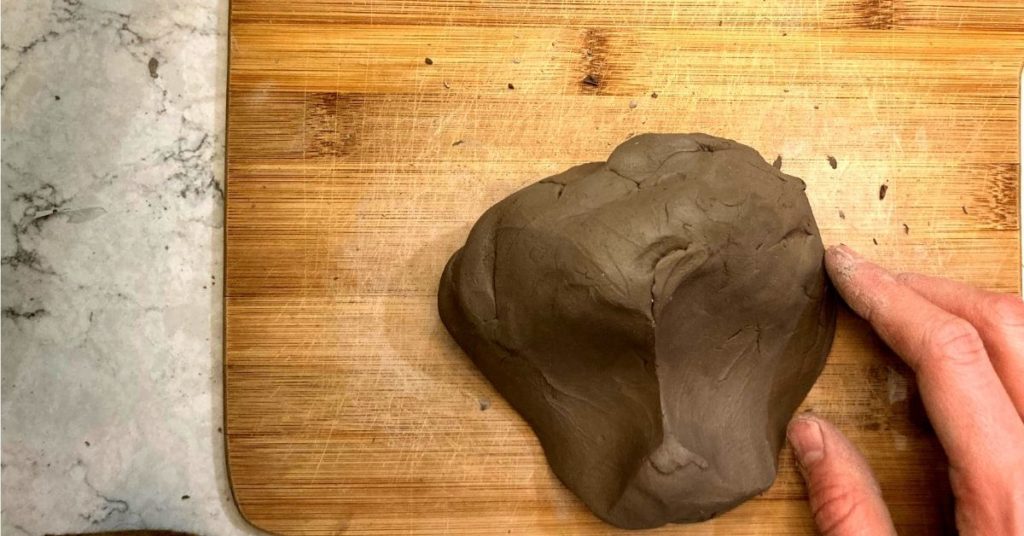
We’re getting into the greenware ceramics stage of clay.
Plastic clay is likely what you think of when it comes to doing ceramics. Plastic is a fancy word meaning the clay can be shaped and formed by hand.
In this stage, a potter can throw clay on the wheel or shape a piece with handbuilding.
The other thing that changes a clay’s plasticity is the grog content. Grog is raw, granulated material that is added to clay to make the clay workable. Often grog is clay that has been fired and then ground up into a powder. It changes a project pretty dramatically.
Check out our article “What is grog is ceramics?” to learn more.
4. Leather hard clay
Another of the greenware stages.
Leather hard clay is where the clay has had time to dry after the plastic stage. The clay should be stiff enough that your fingers won’t leave a mark on the vessel even with pressure.
In this stage, a potter can carve or Sgraffito on the exterior and interior of your piece.
5. Bone dry clay
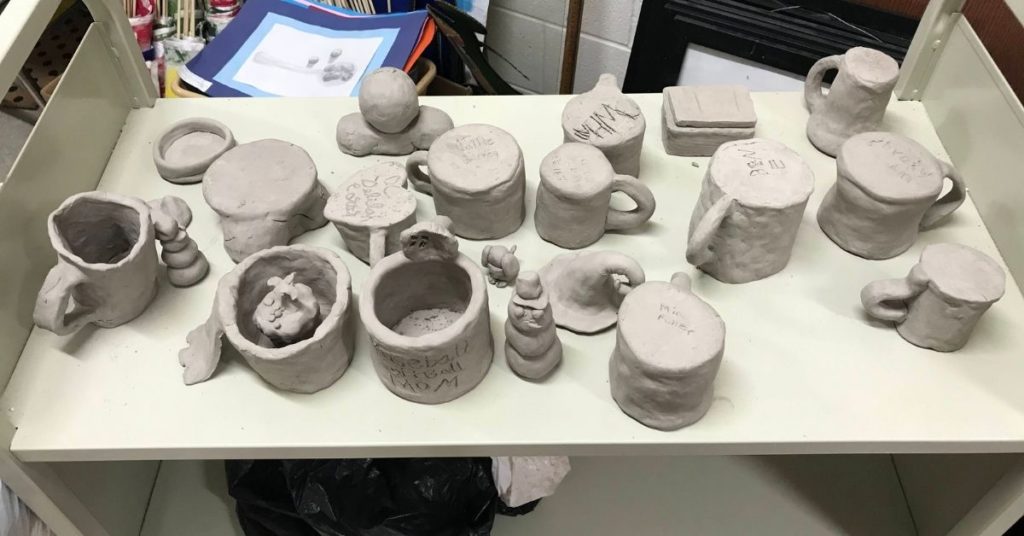
This stage is also one of the greenware ceramics stages. (be sure to read our article “what is greenware in ceramics?” to learn more.)
The moisture is finally completely gone from your piece in the bone dry stage. It takes several days to several weeks for your piece to get to the bone dry stage, especially if you live in humid climates. You can speed the drying process by putting the pieces in a kiln at very low temperatures.
At this stage, you can apply underglaze to the piece. You’re nearly ready to put your piece in the kiln!
6. Bisqueware
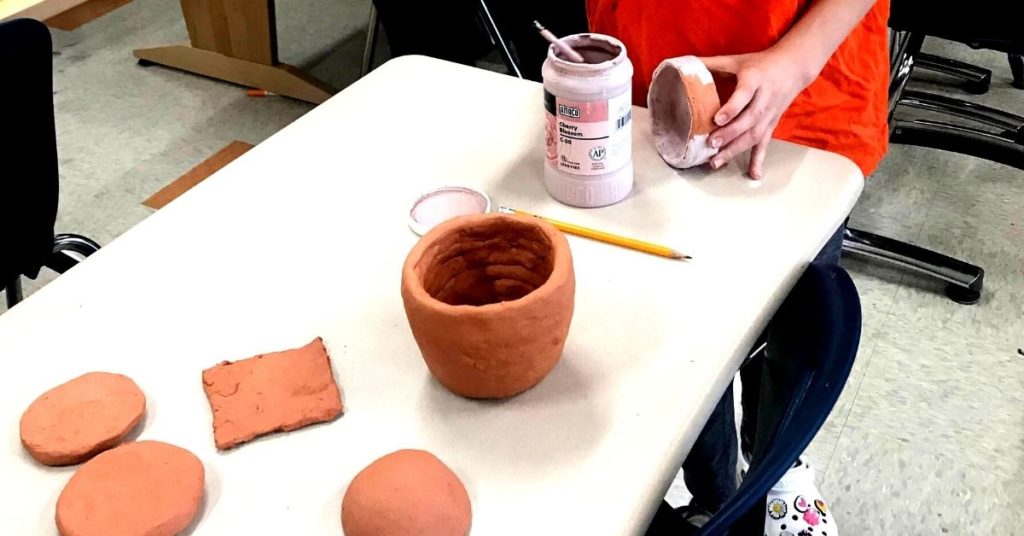
Okay, you’re at the bisqueware stage which means the piece has been in the kiln. The clay should be hard and is now permanently taking on the shape you set out to make.
The bisqueware stage is when glazing typically happens. Yes, the piece is hardened. But it’s still porous which means it can absorb glazes (like crazy!).
7. Glazeware
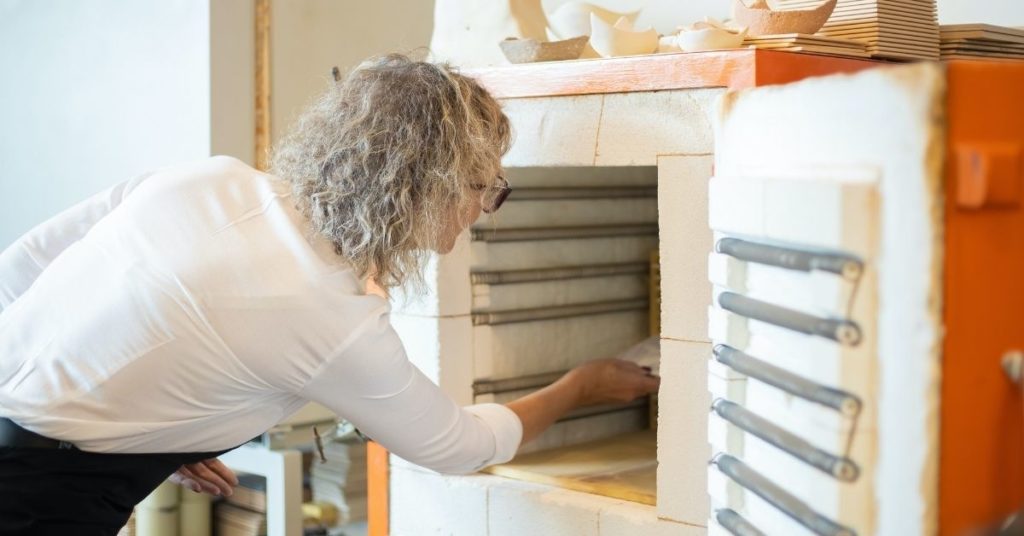
You’re done! Nice going.
The piece is now done. This is the stage that your everyday coffee mug or potted plant is in. In the glazeware stage, your piece is microwave-safe, dishwasher, and everything safe. Except for throwing it on the ground ;).
Conclusion
Thanks for taking the time to read through our article on the 7 stages of clay. You’re a better potter for it!
Click here to read our article about pottery clay – where it comes from and how it becomes pottery material.
If you learned anything new or have a correct to make, we’d love to hear from you! You can leave a comment or simply email us at hello@wheelandclay.com.


